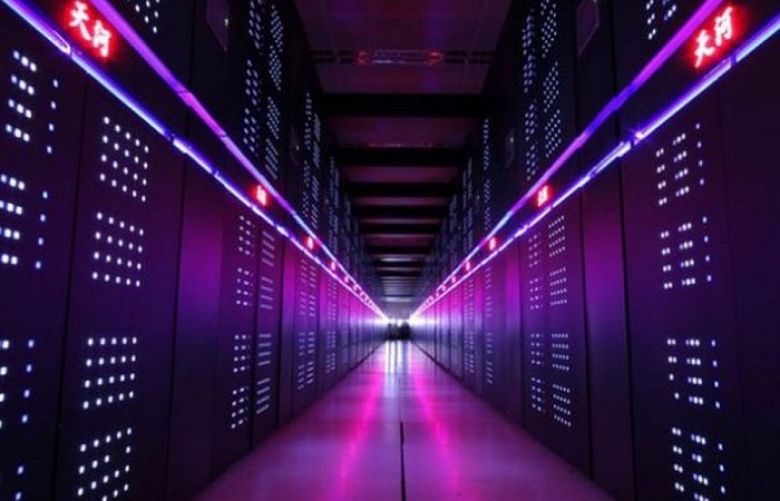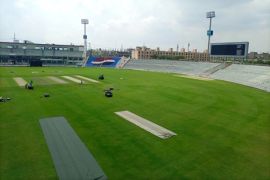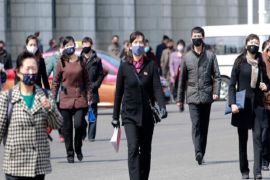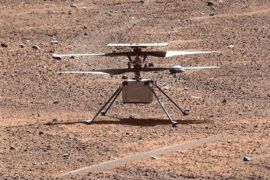The world’s most powerful computer still resides in China.
The Tianhe-2 supercomputer, installed at China’s National University of Defense Technology, remained in the number one spot on the Top500 list of the world’s most powerful supercomputers, released this morning.
Today marked the third consecutive six-month period that the machine has topped the list, and the fourth time overall since 2010 that a Chinese machine has dominated.
The list is updated twice a year by researchers at Lawrence Berkeley National Laboratory, the University of Tennessee in Knoxville and Prometeus, a German company.
This 21-year-old list has, in its history, charted the very leading edge of computing power.
Supercomputers have been used over the years in nuclear weapons research, but more recently they have expanded into advanced research into drugs and understanding the nature of disease as well as helping to scour the Earth for new sources of energy.
The list has also been the source of occasional political kvetching when the U.S. doesn’t take the top spot, as it hasn’t for the last 18 months or so.
The machine — its name means “Milky Way” — is capable of performing 33.86 quadrillion floating point operations — or FLOPS — in a single second.
A floating point operation is a math problem that involves fractional numbers, and when measured in quadrillions is usually referred to as a petaflop.
By comparison, the most powerful Mac you can buy from Apple, the Mac Pro, can be configured to top out at about seven teraflops, or seven trillion FLOPS, making the Chinese supercomputer about 4,837 times more powerful by my math.
The U.S. upped the ante in the ongoing rivalry with China last week when the Department of Energy said it would spend $325 million to build a new pair of machines, at least one of which stands a chance at retaking the world-computing crown.
It tapped IBM and the chipmaker Nvidia to help build them, and said they should be up and running by 2017.
One of them, dubbed Summit, is being designed for nearly nine times the performance of the Tianhe-2, or about 300 petaflops, which is pretty close to the combined performance — 309 petaflops — of all 500 supercomputers on today’s list.
America’s previous world computing champ, the Titan supercomputer at the Oak Ridge National Laboratory in Tennessee, held its spot at number two, followed by another American machine, Sequoia at the Lawrence Livermore National Lab in California, also a previous champ.
Machines in the U.S. held six of the spots in the top 10, and 231 of the machines on the full list.
The supercomputers that make it on to the list are staying on it for longer periods of time.
In fact, most of the machines in the top 10 were two or three years old, and only one was installed this year.
This, the Top500 organization says, is unprecedented in the 21-year history of the list.
Among the top 10 machines, the only new entrant was in the tenth position: A machine running for an unnamed U.S. government agency at an undisclosed location. (Hint: The NSA would be a good guess.)
What’s clear from the list is that the rate at which computing power is improving among these cutting-edge systems has started to slow down over the last two years.
Researchers said the key indicator is the performance of the last system on the list.
From 1994 to 2008, the performance of the 500th most powerful machine grew at an annual rate of 90 percent.
For the last two years it has grown at only 55 percent. (For the record, it jumped from 133.7 teraflops six months ago to 153.4 teraflops today.)
So who builds these machines? Of the 500 supercomputers on the list, 179, or more than 35 percent, were built by Hewlett-Packard. IBM built 153, Cray built 62, SGI built 18 and Dell built nine.
Nearly 86 percent of them relied on Intel chips while eight percent used chips from IBM.
Another 75 systems used graphics accelerator chips from Nvidia, which are helpful in part because they’re designed specifically to handle floating-point operations.
But, the world’s most powerful supercomputer, China’s Tianhe-2, was designed by the university that houses it and is built with the help of Inspur, a Chinese computing and IT company.







